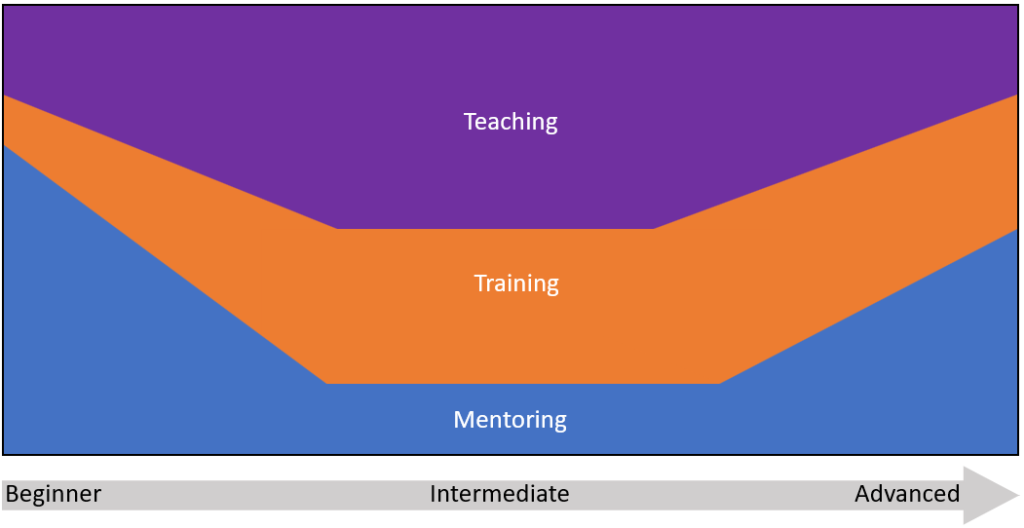The question most frequently asked to tango teachers is, “How do I lead this?” Trying to not disappoint, we come up with an assortment of plausible-sounding answers. Lead with your chest, with the tone of your embrace, with the pressure in your fingers. Use your hips, your disassociation, the floor, your intention, your axis. Focus on your connection, on your breath…use and focus on everything! But is asking how to lead is the wrong question?
The solution is often not a matter of how but a matter of when. Leading has many connotations, but its fundamental meaning is simply to be before. At its core, leading is a matter of timing. When we lead early enough, we can have a clear lead without using much force. Changing the timing of a lead is often sufficient to change a move from not working to working every time.
Do we have a clear idea of what we are leading? Or did we have a vague muddled idea and then hope for the best? Good tango followers are the closest anyone gets to mind readers. A clear image of a movement is enough for them to understand—a clear what becomes the how.
What is the setup and geometry of the step? Where precisely do we step and does our partner step? Is there enough room for the move to fit? Often, when a student asks “How do I lead this,” the real question is, “How do I force this movement to fit even though the geometry is incorrect?” We can give tips, tricks, and hacks on how to force the move to work anyways, and the student may even then leave feeling they learned something valuable. Or we can take the time to explain where to step such that the movement fits in the first place.
The why of a lead is how the movement captures a particular section of the music, completes a melodic phrase, fits within a thematic idea, or refers back to a previous sequence. A movements with a clear why is infinitely easier to interpret and follow than a nonsensical movement without context. The why is at least as important as the how, for he who has a why to lead can use almost any how.
It can be uncomfortable to focus on questions other than how. How is what students ask us about, and answering it makes us sound wise. Changing the question to when, what, where, or why makes us sound like we are dodging the question and don’t know. But here is my truth. I don’t know how my body signals a lead, and my best guess is that it is many things at once. I focus very little on how exactly the lead is signaled. Instead, I focus on when, making sure I lead early enough; I focus on what, having clear mental images and making clear choices about what I am leading; I focus on where, studying the geometry of the movements; and I focus on why, trying to choose movements that fit within the music and the thematic ideas we develop. The when, what, where, and why are how I lead.
